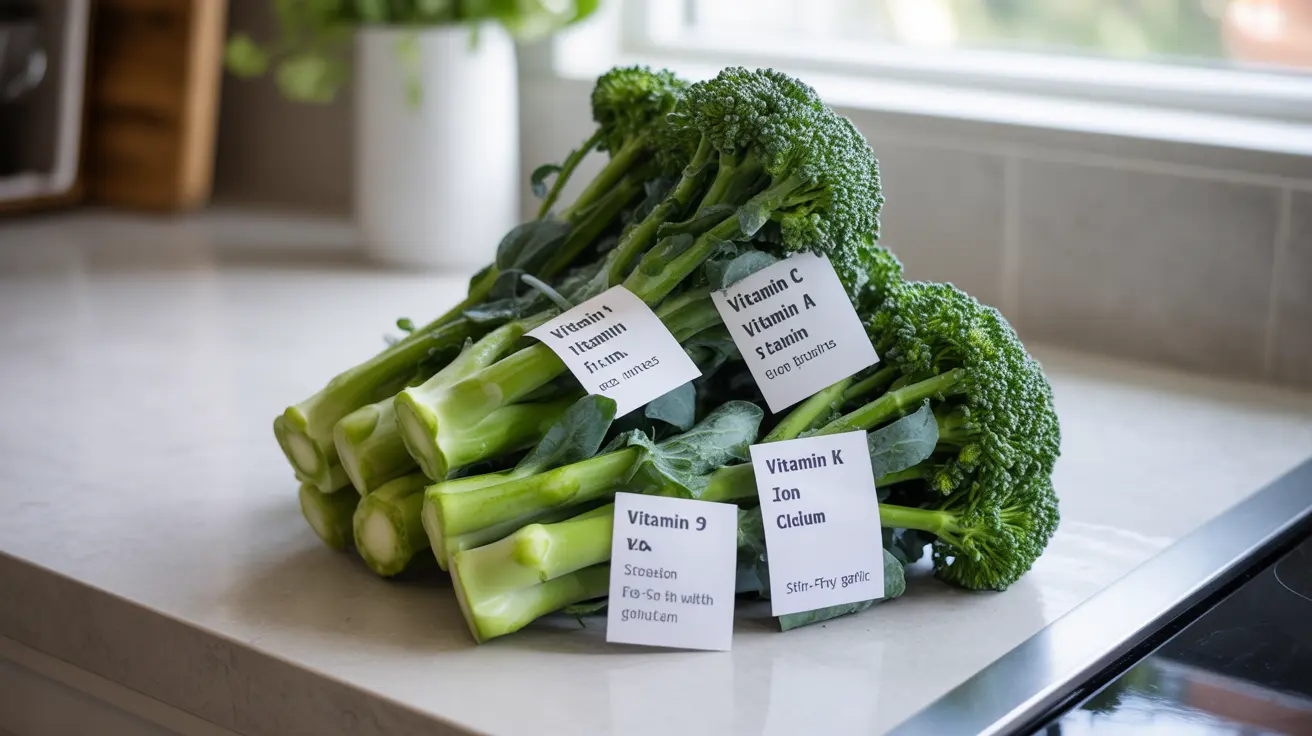Broccolini, a hybrid vegetable that combines regular broccoli with Chinese kale, has become increasingly popular among health-conscious consumers. This versatile green vegetable not only offers a delicate, slightly sweet flavor but also packs a powerful nutritional punch that can significantly contribute to your overall health and wellness.
Understanding broccolini nutrition can help you make informed decisions about incorporating this nutrient-rich vegetable into your diet. From its impressive vitamin content to its potential health-promoting properties, broccolini offers numerous benefits that make it a valuable addition to any healthy eating plan.
Nutritional Profile of Broccolini
Broccolini is an excellent source of essential nutrients while being naturally low in calories. This vegetable contains:
- Vitamin C
- Vitamin A
- Vitamin K
- Folate
- Calcium
- Iron
- Potassium
- Fiber
- Antioxidants
Each serving of broccolini provides a significant portion of your daily recommended intake of these vital nutrients, making it an efficient way to boost your nutritional intake.
Health-Promoting Properties
Cancer-Fighting Potential
Broccolini contains powerful compounds called glucosinolates and sulforaphane, which have been linked to potential cancer-fighting properties. These substances help protect cells from damage and may inhibit the growth of cancer cells.
Heart Health Benefits
The high fiber content and antioxidant compounds in broccolini support cardiovascular health by helping to maintain healthy cholesterol levels and protect blood vessels from oxidative stress. The potassium content also helps regulate blood pressure.
Bone and Immune System Support
The combination of vitamin K and calcium in broccolini makes it particularly beneficial for bone health. Additionally, its high vitamin C content helps strengthen the immune system and promotes better absorption of iron from plant-based sources.
Optimal Preparation Methods
To maximize the nutritional benefits of broccolini, consider these cooking methods:
- Steam for 5-7 minutes to retain nutrients
- Quick stir-fry with minimal oil
- Roast at 400°F for 10-12 minutes
- Blanch briefly for salads
Avoid overcooking broccolini, as this can lead to nutrient loss and compromise its beneficial properties.
Comparing Broccolini and Broccoli
While both vegetables offer significant health benefits, broccolini has some unique characteristics:
- Milder, sweeter flavor profile
- More tender stems requiring less cooking time
- Similar nutrient content with slight variations
- Generally higher price point but more delicate texture
Frequently Asked Questions
What are the key nutritional benefits of eating broccolini?
Broccolini is rich in vitamins C, A, and K, along with minerals like calcium and iron. It's also high in fiber and antioxidants while being low in calories, making it an excellent choice for overall nutrition and weight management.
How does broccolini support heart health and cancer prevention?
Broccolini contains compounds like sulforaphane and glucosinolates that may help prevent cancer cell growth. Its fiber content and antioxidants support heart health by maintaining healthy cholesterol levels and protecting blood vessels.
What vitamins and minerals are found in broccolini and how do they impact bone and immune health?
Broccolini is packed with vitamin K and calcium for bone health, vitamin C for immune support, and iron for healthy blood cells. These nutrients work together to maintain strong bones and support optimal immune system function.
How should broccolini be cooked to retain its nutrients and maximize health benefits?
For optimal nutrient retention, steam, quick stir-fry, or briefly roast broccolini. Avoid overcooking, as this can decrease its nutritional value. Light cooking methods help preserve water-soluble vitamins and beneficial compounds.
What makes broccolini different from broccoli in terms of nutrition and taste?
Broccolini offers a milder, sweeter taste compared to regular broccoli. While both vegetables share similar nutritional profiles, broccolini has more tender stems and a more delicate texture. It requires less cooking time and can be eaten in its entirety.




